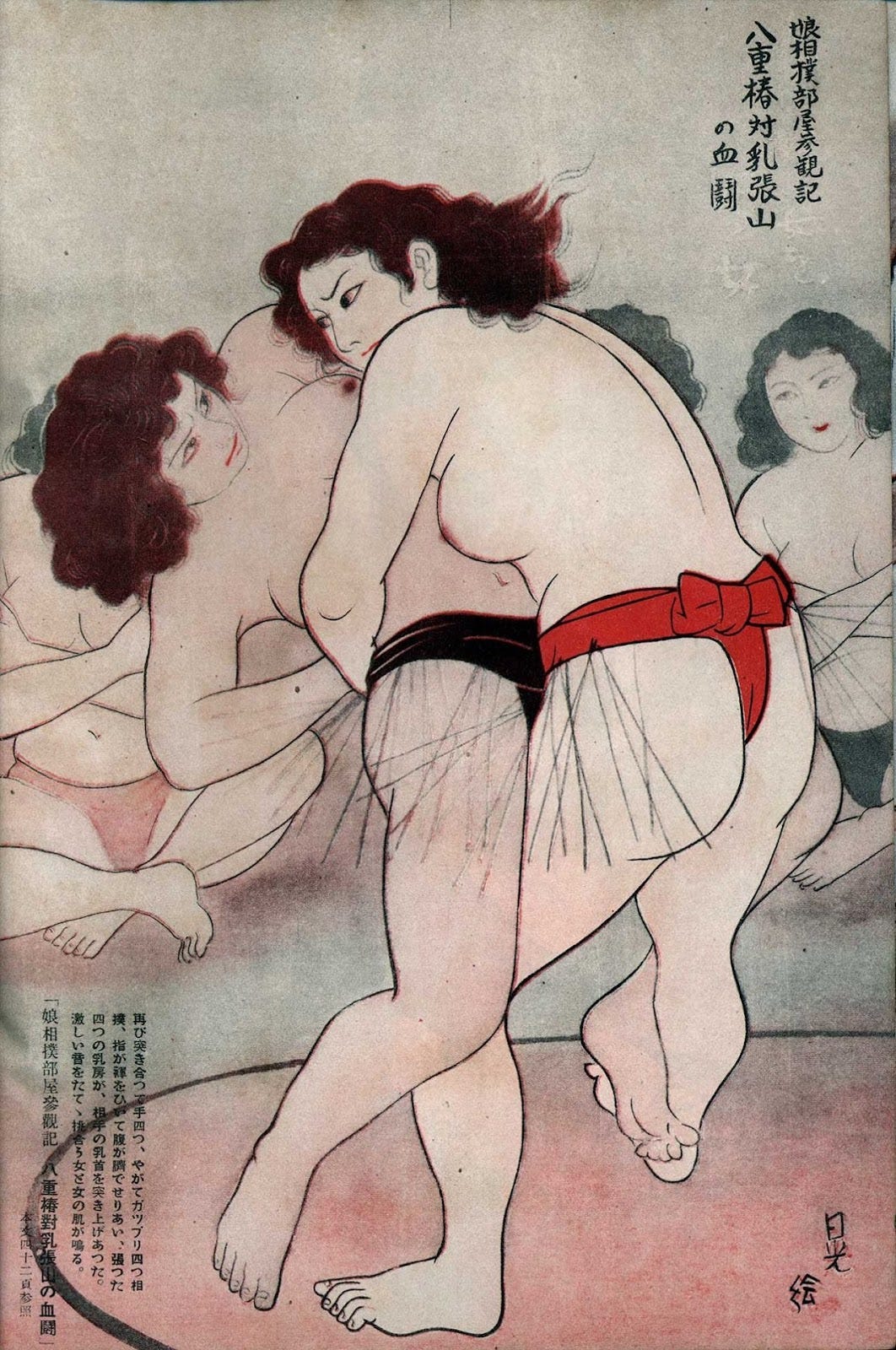Onna-zumō: A Short History of Female Sumo Wrestlers
Who doesn't love wrestler names like "Big Boobs" and "Holder of the Balls"?
In 2018, Ryōzō Tatami (I love his mats), mayor of Maizuru city, was giving a speech at a sumo tournament when he suddenly collapsed in the dohyō, the sumo ring. Two female nurses rushed in to give the man CPR. Seeing the mayor’s life saved by these skilled nurses, the referee decided to thank them by ordering these women over and over again to get the hell out of the dohyō.
The Japan Sumo Association (JSA) apologized on behalf of the referee, but insisted that women are forbidden from entering the sacred space of the dohyō because they are impure. Such important, longstanding traditions must be maintained!
However, the JSA is wrong. There’s actually a long history of women entering the ring, not just to save doddering old men, but also to fight.
The first time the word sumo (相撲) was used in writing was in the 720 AD text Nihon Shoki:
Mane, a carpenter, was planing a piece of wood with an axe and a stone ruler. The Emperor Yūryaku watched Mane work and was impressed with the carpenter’s skill: the wood was perfectly level, and Mane never damaged his axe. The Emperor, to show he was down with his homies the common people, asked the carpenter whether he ever messed up. Mane, like the hero of a shōnen manga, was all “hell naw, I never make mistakes! I’m the very best, like no one ever was!”
The Emperor was unimpressed and called for his female attendants to strip and wrestle in only their waistcloths. Mane’s eyes popped out of his skull, but he diligently kept on working his piece of wood, chipping his axe as he carelessly bumped it into the stone ruler. The wise and magnanimous Emperor then chastised the carpenter for recklessly boasting about his skill and promptly had him executed. That’ll teach him not to brag so much again.
That’s right, the first time the word sumo was written that we know of, it was used to describe women’s wrestling. (Two earlier stories of wrestling between men exist, but both use a different word to describe the fight.)
Sources on sumo are pretty sparse for the next thousand years, but during the Tokugawa period (1603–1868) there was a spike in popularity. At this time, sumo resembled modern pro-wrestling. Wrestlers would travel between towns, and the local fighters were expected to win while the visitors would lose on purpose. In Edo, matches between blind men were a popular freak show for a while.
Male wrestlers had cool nicknames like Thunder, Devil Beater, and Guardian King. The women’s nicknames reveal that the ancient Japanese mind wasn’t so different from that of a 21st century schoolboy (or a board member of the JSA): Big Boobs, Holder of the Balls, and Where the Clam Lives.
In the late 1600s, women in the pleasure quarter of Osaka were putting on sumo matches for their customers. By the mid-1700s, women’s sumo, or onna-zumō 女相撲, had become a popular attraction. We have records of women’s matches in Edo in 1744, and of women wrestling blind men in the 1760s.
For a while the authorities put up with these uppity women in loincloths corrupting public morals, but in 1873 they placed an amusingly specific ban on matches between women and blind men, and eventually on all women’s matches. Women’s sumo survived in the provinces as a sport and also as a ritual in rain-making ceremonies and at wedding celebrations.
Today there are women’s amateur clubs and university teams, but no professional matches. The JSA prohibits female mayors from giving speeches or handing out trophies in the dohyō and has even banned girls from participating in Chibikko Sumo (“Little Tykes Sumo”), where elementary school children get to “fight” professional wrestlers. (Ironically for an organization so obsessed with tradition, previously (before 2018), the JSA had allowed girls in Chibikko Sumo.)


